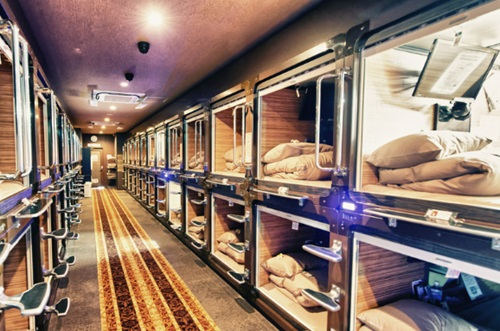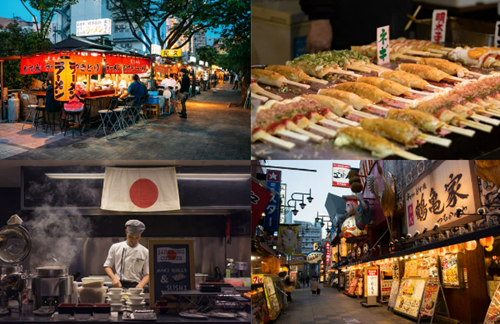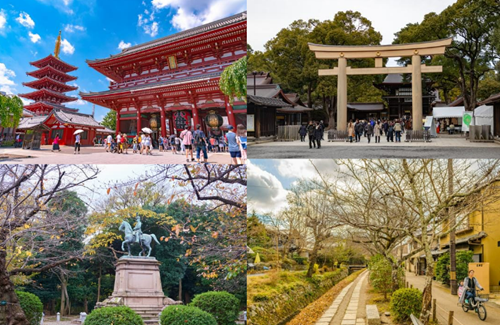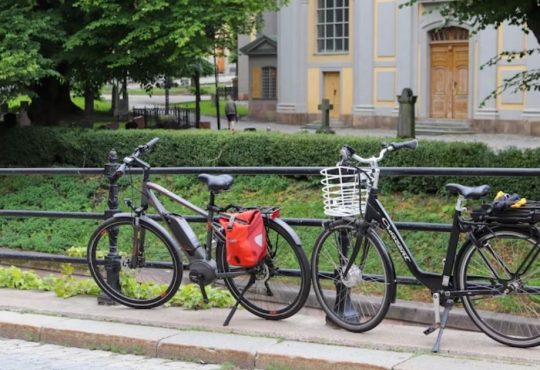Dreaming of a trip to Japan but worried about the costs? Japan may have a reputation for being expensive, but with the right planning and budgeting, you can enjoy a full seven days in this amazing country without overspending. From the bustling streets of Tokyo to the serene temples of Kyoto, this guide for budgeting a 7-day Japan trip offers countless experiences to suit every traveler’s budget. With strategic planning, you can save big on essentials like accommodation, food, and transportation, giving you extra cash for unique experiences along the way.
This guide will walk you through the steps to budget your trip and give you a stress-free travel plan. Whether you’re a first-time visitor or a returning Japan enthusiast, these tips and breakdowns will help you understand where your money goes, how to save, and how to make the most out of your week in Japan without compromising on experience. Let’s dive in!
Setting Your Budget for a 7-Day Japan Trip
Before getting into details, let’s outline the average cost categories you’ll need to budget for a week in Japan.
Key Expenses:
- Airfare – This will vary significantly depending on the time of year and your departure city.
- Accommodation – Options vary from budget hostels to mid-range hotels and vacation rentals.
- Food – Japan offers affordable options if you know where to look.
- Transportation – Consider both long-distance (Shinkansen bullet trains) and local transit.
- Sightseeing and Activities – Includes entrance fees to attractions, tours, and local experiences.
Let’s break down each of these categories to get a clearer picture of the overall cost.
1. Airfare: Finding the Best Deals
Airfare is often the largest upfront cost, so here are some details to help you save:
- Time of Booking: Aim to book your tickets 3-6 months in advance for the best deals. Flight prices are lower during the off-season (typically winter months like January and February, excluding New Year).
- Popular Sites for Deals:
- Google Flights and Skyscanner are great for comparing airlines and finding alerts on price drops.
- Airline-specific deals: Airlines like All Nippon Airways (ANA) and Japan Airlines (JAL) often offer discounted flights from the U.S. and Europe, particularly for travelers staying less than 90 days.
- Budget Airlines from Asia: If you’re already in Asia, Japan is accessible via budget airlines like Peach Airlines, Jetstar Japan, and AirAsia Japan, with flights as low as $100 to $200 round-trip from cities like Seoul, Taipei, and Bangkok.
2. Accommodation: Choosing the Best Stay for Your Budget
Japan has a range of accommodation styles, each with unique cultural experiences:

- Budget-Friendly Choices:
- Capsule Hotels: These small, individual pods are a quirky and budget-friendly option, averaging $30 to $50 per night. They’re common in cities like Tokyo and Osaka and ideal for solo travelers or those who want a unique experience.
- Hostels: Japan’s hostels are clean, safe, and often feature Japanese-style decor. Many also offer private rooms, allowing a more comfortable stay without high costs. Expect $20 to $40 per night in cities and even lower in smaller towns.
- Mid-Range Choices:
- Business Hotels: Known for their compact rooms and amenities like Wi-Fi, toiletries, and sometimes breakfast, business hotels (like APA Hotel and Toyoko Inn) are ideal for travelers on a moderate budget. Prices range from $50 to $80 per night.
- Ryokan (Traditional Inns): Staying in a ryokan can be pricier ($80 to $150 per night), but it’s a worthwhile splurge if you want to experience traditional tatami mat rooms, futons, and possibly hot springs (onsen). Look for budget ryokan in smaller cities or stay for one night as a cultural experience.
- Booking Tips: Use sites like Booking.com and Rakuten Travel for deals, and consider staying near public transport hubs like Tokyo’s Ueno or Osaka’s Namba for convenient and affordable options.
3. Food: Enjoying Japan’s Culinary Scene on a Budget
Japanese food is world-renowned, and with a little planning, you can enjoy its delights without spending much.

- Convenience Stores (Konbini): Japan’s convenience stores are a traveler’s best friend. You can pick up affordable, delicious meals like onigiri (rice balls) for about $1.50, bento boxes for around $5, and drinks and snacks at low prices. 7-Eleven, Family Mart, and Lawson are the main chains, and they offer fresh, high-quality food options daily.
- Affordable Restaurant Chains:
- Gyudon Chains (Beef Bowl): Places like Yoshinoya and Sukiya serve filling beef bowls for $3 to $6. They’re open 24/7 in many locations and are ideal for quick meals.
- Ramen Shops: Many ramen restaurants, including chains like Ichiran and Ippudo, offer hearty bowls starting at $8 to $10.
- Conveyor Belt Sushi: Try “kaiten-zushi” (conveyor belt sushi) restaurants like Kura Sushi or Sushiro for plates priced at $1 to $2 each, allowing you to sample various items affordably.
- Street Food:
- Popular in areas like Osaka’s Dotonbori or Tokyo’s Asakusa, Japan’s street food includes treats like takoyaki (octopus balls), yakitori (grilled chicken skewers), and taiyaki (fish-shaped pastries filled with red bean). Most items cost $1 to $5 each.
- Total Food Budget: You can eat well in Japan for around $20 to $30 a day, enjoying both the convenience of konbini meals and a few sit-down options.
4. Transportation: Navigating Japan Efficiently
Transportation is a must-plan expense to ensure a smooth, budget-friendly journey.
- Japan Rail Pass (JR Pass):
- The 7-day JR Pass costs about $280 and provides unlimited rides on JR trains, including the Shinkansen (bullet train). If you plan to travel between major cities like Tokyo, Kyoto, and Osaka, the JR Pass pays for itself. For instance, a round-trip Shinkansen ticket between Tokyo and Kyoto alone costs about $250.
- If you’re only visiting Tokyo or Kyoto and nearby areas, you can skip the JR Pass and buy individual tickets or use regional passes instead.
- City Transit Passes:
- In major cities, daily metro or bus passes are affordable and convenient. For example, a Tokyo Metro Day Pass costs about $6, while a Kyoto One-Day Bus Pass costs around $5.
- Look for regional rail passes if you’re visiting a specific area. The Kansai Thru Pass offers unlimited travel around Osaka, Kyoto, Nara, and Kobe for $42 for two days.
- Total Transportation Budget: Including the JR Pass, plan around $350 if you’re exploring multiple cities. For local-only travelers, $100 to $150 should be enough for in-city transit.
5. Sightseeing and Activities: Top Attractions on a Budget
Japan’s attractions offer a mix of free and low-cost experiences, so you can explore rich culture and natural beauty without overspending.

- Free Attractions:
- Temples and Shrines: Many famous temples and shrines are free or have a small donation box at the entrance. In Tokyo, Sensoji Temple and Meiji Shrine are free. In Kyoto, iconic spots like Fushimi Inari Shrine with its endless red torii gates are also free.
- Parks and Public Spaces: Explore beautiful gardens like Ueno Park in Tokyo or the Philosopher’s Path in Kyoto, which are free to enter and especially lovely during cherry blossom and autumn foliage seasons.
- Low-Cost Museums and Cultural Sites:
- Japanese Castles: Some castles charge small fees, such as Osaka Castle ($6) or Himeji Castle ($10), both offering a glimpse into Japan’s feudal history.
- Ghibli Museum in Tokyo: For anime fans, the Ghibli Museum is a must-visit, with tickets around $10. Tickets sell out fast, so book online as early as possible.
- Unique Experiences:
- Onsen (Hot Springs): For a relaxing Japanese experience, try an onsen bath. Entrance fees range from $5 to $15. Some onsens near Tokyo, like Oedo Onsen Monogatari in Odaiba, offer a traditional hot spring experience in a themed setting.
- Tea Ceremony: If you want to try a traditional Japanese tea ceremony, it’s often available for $20 to $30. Kyoto offers some of the best tea ceremony experiences.
- Total Sightseeing Budget: Plan $50 to $100 for entrance fees and special experiences if you visit a few paid attractions.
6. Sample of Expenses for a 7-Day Japan Trip
Here’s the budget summary with a few more details:
| Expense | Budget Option ($) | Mid-Range Option ($) |
|---|---|---|
| Airfare | 700 – 1,000 | 1,200 |
| Accommodation | 250 – 400 | 500 |
| Food | 150 – 210 | 300 |
| Transportation | 350 | 350 |
| Sightseeing | 50 – 100 | 150 |
| Total | 1,500 – 1,860 | 2,500 |
7. Tips to Make Your Travel in Japan Stress-Free
The efficient infrastructure, safety, and hospitality make Japan an incredibly traveler-friendly destination, but there are a few insider tips to help make your trip as smooth and enjoyable as possible. Here are some practical suggestions to help you navigate Japan with ease:
1. Plan Your Itinerary in Advance: Creating a general outline of your trip can save you time and help you avoid unnecessary stress.
- Key Destinations: Decide which cities and regions you want to visit to plan your transportation and accommodations accordingly. For example, if you plan to visit Tokyo, Kyoto, and Osaka, you may want to purchase a Japan Rail (JR) Pass to save on transportation costs.
- Timing Your Visits: Many temples and museums have specific opening hours, and some shrines can get crowded. Plan to visit popular tourist spots either early in the morning or later in the day for a more relaxed experience.
- Reserve Restaurant Spots: In popular dining areas, especially in cities like Tokyo and Kyoto, it’s common for restaurants to require reservations. Use online services like Tabelog or Gurunavi to check availability and make reservations.
2. Stay Connected with a Pocket Wi-Fi or SIM Card: Having a reliable internet connection will make your trip much easier, especially for navigation, translation, and finding quick travel information on the go.
- Pocket Wi-Fi Rental: Available at the airport or for pickup at major train stations, pocket Wi-Fi devices are portable and allow multiple devices to connect. Rental costs are around $5 to $10 per day, depending on data speed and provider. Providers like Japan Wireless and Global Advanced Communications offer competitive rates and convenient booking options.
- SIM Cards: If you only need data for one device, consider a Japanese SIM card with a data-only plan. Companies like Mobal and B-Mobile offer prepaid data SIMs, which are especially convenient for visitors staying more than a few days.
3. Familiarize Yourself with Japanese Etiquette: Japanese culture places a strong emphasis on respect and consideration for others, and understanding basic etiquette can make your interactions smoother and more enjoyable.
- Basic Phrases: Learning a few Japanese phrases goes a long way. Simple expressions like “Sumimasen” (Excuse me) and “Arigato gozaimasu” (Thank you very much) can make a positive impression and help with daily interactions.
- Queuing Up: In Japan, people line up for trains, buses, and even elevators. Follow marked lines on the platform, and wait for passengers to exit before you board.
- Quiet Zones: Japanese people typically avoid loud conversations in public transport or other quiet spaces. If you’re traveling with friends or family, keep your voice down on trains and buses.
4. Carry Cash and Get Familiar with ATMs: Although Japan is moving toward cashless payments, cash is still widely used, especially in rural areas and smaller shops.
- Currency Exchange: Exchange some currency at the airport or withdraw cash from ATMs upon arrival. Japanese banks, such as Seven Bank (7-Eleven ATMs) and Japan Post Bank ATMs, accept many international debit cards, including Visa and Mastercard.
- Using ATMs: ATMs in convenience stores like 7-Eleven, Lawson, and Family Mart are widely available and support foreign cards. Be mindful that many ATMs have fees ranging from 100 to 200 yen ($0.90 to $1.80 USD) per transaction, so it’s best to withdraw larger amounts less frequently.
5. Get Familiar with the Japanese Rail System and Public Transit: Japan’s rail network is extensive, but it can also be complex if you’re unfamiliar with it. A little preparation will make your trips much easier.
- IC Cards: Purchase an IC card (such as Suica or Pasmo) from train stations in major cities. These reloadable cards make it easy to pay for transit fares, vending machines, and even some shops. They can be used on various types of transit, including subways, buses, and trains, across most cities in Japan.
- Japan Rail (JR) Pass: If you’re visiting multiple cities, invest in a JR Pass. The pass grants unlimited travel on JR trains, which includes the Shinkansen (bullet train). However, be sure to understand which lines are covered by the JR Pass, as certain private lines aren’t included.
- Google Maps and Hyperdia: Use apps like Google Maps or Hyperdia (a Japanese transit app) for planning routes and checking train schedules. Hyperdia can show you which trains are covered by the JR Pass and offers real-time updates on train delays.
6. Use Luggage Delivery Services to Travel Light: Navigating Japan’s bustling train stations with heavy luggage can be challenging. Fortunately, Japan has excellent luggage delivery services.
- Takuhaibin (Luggage Delivery): Services like Yamato (Kuro Neko) or Sagawa offer next-day luggage delivery between hotels, airports, and train stations for $15 to $25 per item. This service is particularly useful if you’re moving between cities and want to travel light.
- Luggage Lockers: Most major train stations in Japan have coin lockers where you can store luggage temporarily. Prices vary depending on the locker size, but expect to pay between 300 and 700 yen ($2.70 to $6.30 USD) per day.
7. Download Useful Apps for a Stress-Free Experience: Technology can be your best friend when exploring a new country. Here are a few essential apps:
- Google Translate: Essential for translating Japanese menus, signs, and labels. The app also has a camera feature to scan and translate text in real time.
- Japan Travel by NAVITIME: This app is specifically designed for navigating Japan, offering train routes, transfer information, and travel suggestions. It includes offline maps, which can be handy if your data connection is limited.
- LINE: LINE is Japan’s popular messaging app. Many restaurants and tourist services offer promotions and can even be reached through LINE if you need assistance.
8. Buy a Travel Insurance Policy: Japan is a very safe country, but it’s always best to be prepared. Travel insurance provides peace of mind in case of medical emergencies, trip delays, or other unexpected incidents.
- Medical Coverage: Healthcare in Japan can be costly without insurance. A travel insurance plan with medical coverage will ensure you have access to healthcare services if needed.
- Personal Liability: Some travel insurance policies include personal liability coverage, which can be useful if you accidentally damage property or cause an accident.
Experience Japan with minimal hassle and maximum enjoyment!
A trip to Japan doesn’t have to drain your bank account. With thoughtful budgeting and a little flexibility, you can experience Japan’s vibrant culture, history, and natural beauty without overspending. Whether it’s enjoying a bowl of ramen in a cozy Tokyo shop or exploring Kyoto’s ancient temples, Japan offers unforgettable experiences that cater to all budgets.
From affordable accommodations and delicious budget eats to cost-effective transportation options, Japan is accessible to travelers with varying budgets. Remember, the key to a stress-free and budget-friendly 7-day Japan trip is planning ahead and knowing where to spend and where to save. Follow these guidelines, and you’ll be well on your way to an incredible, affordable Japanese adventure. Safe travels!





